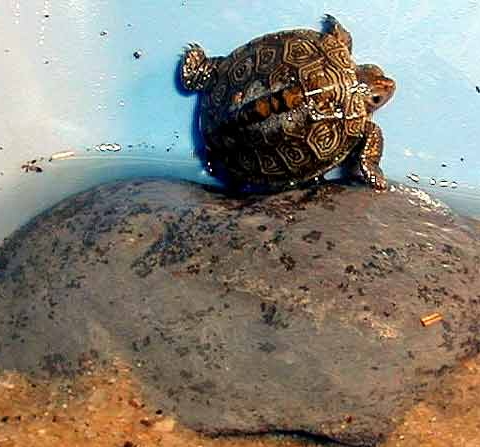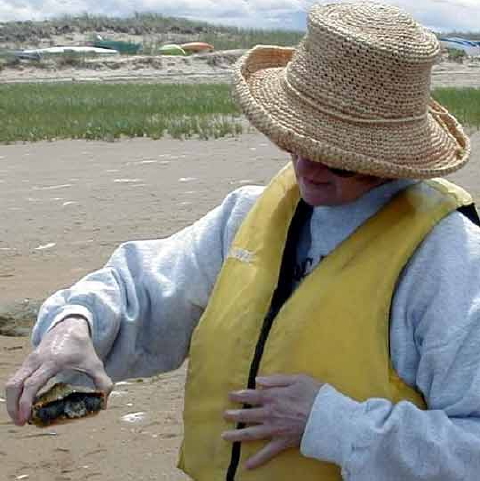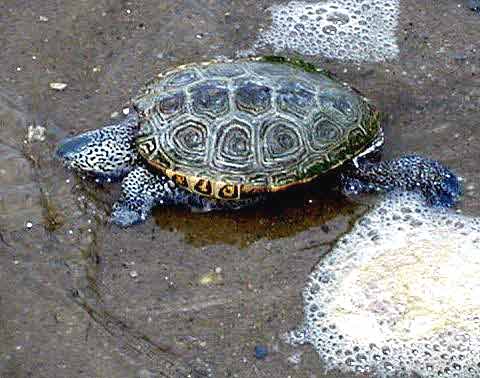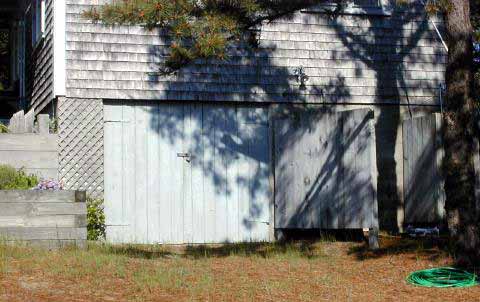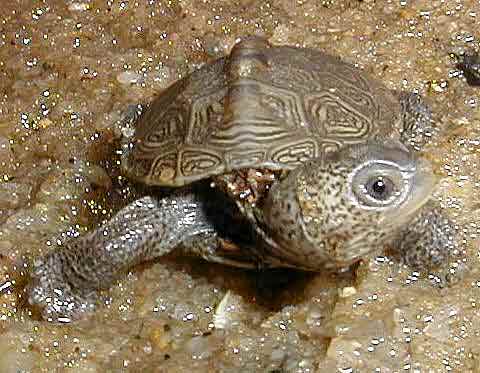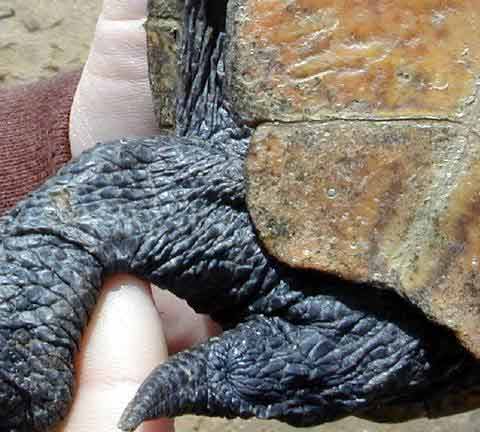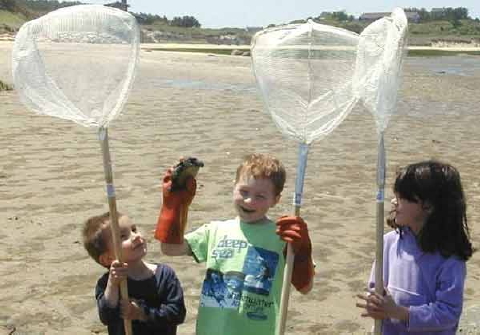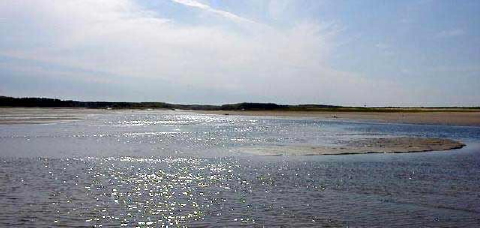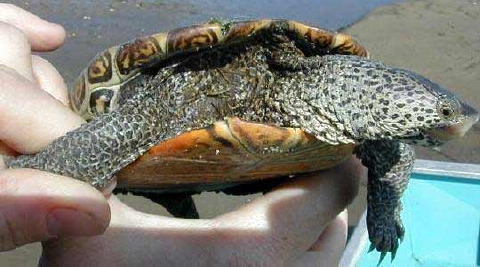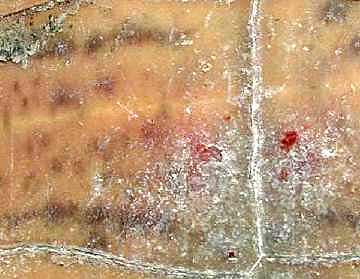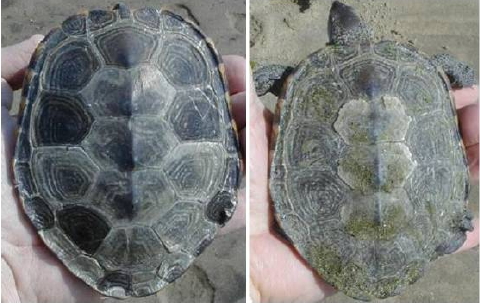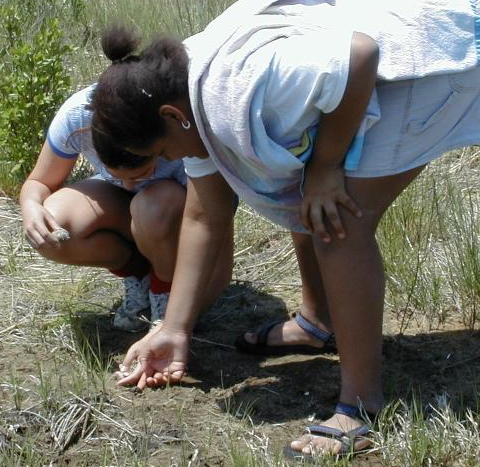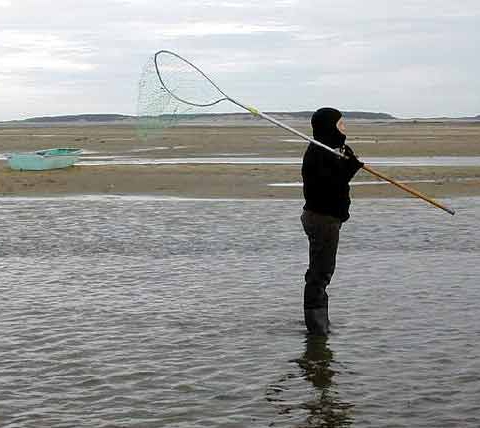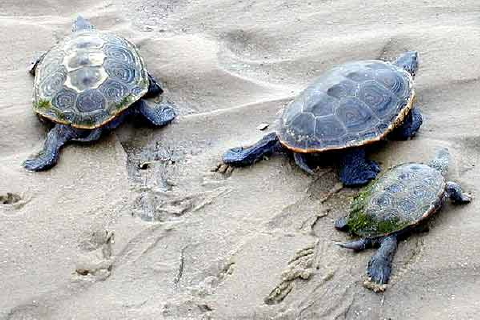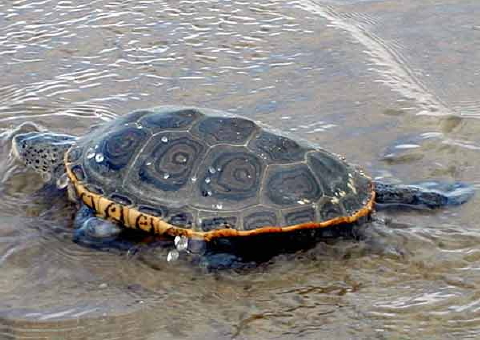
Thunderstorms Pound Wellfleet’s Blackfish CreekÂ
Wedged between waves of violent thunderstorms, we managed a few moments of terrapin observation in Blackfish Creek this morning. As we arrived on Lieutenant Island and gathered gear for over-dune trek to the rip, the field phone rang with an urgent message from Bob Prescott, director of the local Mass Audubon sanctuary. “I just looked at radar and a band of thunderstorms has taken aim on Wellfleet. If you’re in the water, get out. If you’re not, stay put.â€Â Sound advice, indeed. The raw beauty of thunderstorms skimming across the bay is a sight to die for, but standing knee deep in water on the tidal flats (and there’s a reason why they’re called “flatsâ€), while holding a dip net with a 10-foot metal rod, tempts the fates to extol the “die for†price of admission. We hunkered down inside the jeep as lightning ricocheted around us.
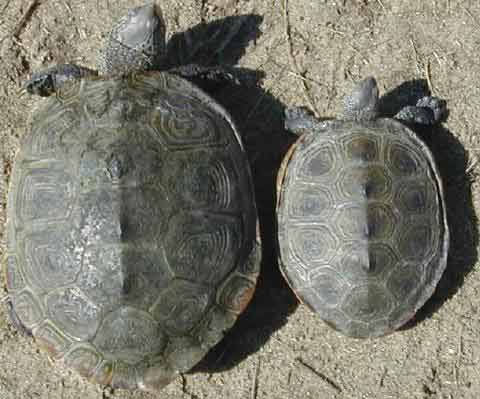
Terrapin Gender Dimorphism Models:
Female #697 and Male #823
In a lull between bands, we raced across the channel and took position in the rapids. The once pristine beach was strewn with slimy algae of all shapes and shades, as the overnight storm churned the bottom. Water color and visibility matched the blackened sky. But as luck would have it, and it usually does, Terrapin 697 swam right through my legs and into the net. She is an old friend with a remarkable story to tell.
First observed in June of 1997, she had crawled out of Blackfish Creek to nest in an upland dirt road on Old Wharf Point. Around 10 years old, she measured 16.70 centimeters carapace length and weighed 806 grams. The next time we saw #697 proved traumatic. On 1 July 1998, she was hit by a car and left at the side of Route 6. The front of her carapace was broken, as was her plastron, and she was ambulanced to Wildcare for emergency treatment.
Shell plastered, she was released into Blackfish Creek with but faint prayer that she would survive. Yet, on 13 September 1999, Turtle 697 (on the left) was netted while paired with Male #823 (right). Her shell, though looking a bit dinged, had healed quite well. And now the picture of this “adorable couple†serves as our lecture slide for illustrating gender dimorphism in diamondback terrapins, never mind offering a poignant vignette about the dangers of vehicles during nesting season, the importance of quick and positive intervention, and the incredible resilience of turtles — all with a nice happy ending.
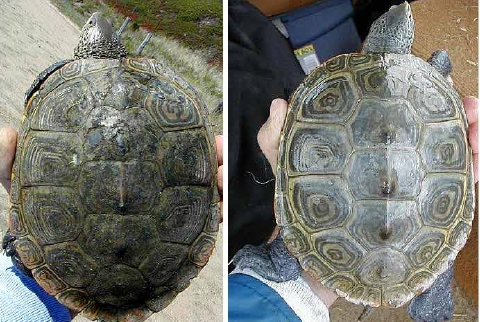
Female Terrapin #697 in 1999 (Left) and 2001 (Right)Â
Today’s observation merely punctuates to the story. Number 697, as shown by these carapace photos from 1999 and 2001, has continued to improve. It is no surprise that she has not grown much during this traumatic healing period. She measures 16.8 centimeters long and weighs 846 grams. But, all in all, not a bad outcome for a critter who had been so badly injured. It was worth dancing between lightning strikes to meet her once more.
The (Most) Northern Diamondback Terrapin
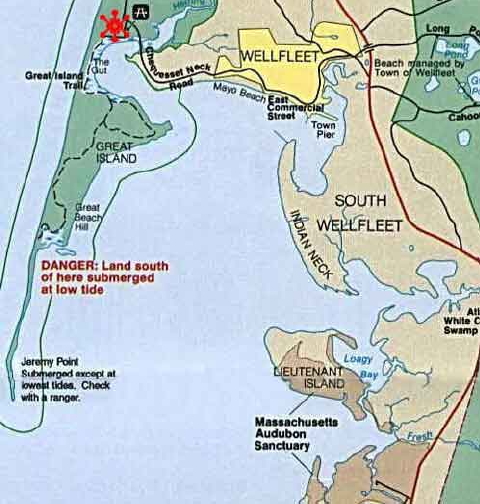
Northernmost Diamondback Terrapin Hatchling Found
We lucky researchers in Wellfleet Bay let the words “the northernmost population of diamondback terrapins†roll glibly off our lips. But in any “northernmost†habitat, there must be one spot, one location which is north of all the rest. So it is in Wellfleet Bay, too, as the dike blocking the mouth of the Herring River defines the most northern accessible latitude in the entire harbor. Today a family, driving Chequesset Neck Road to its northwest dead end at Cape Cod Bay, found a hatchling crossing in front of their car (see red turtle on map below). They brought it to the Mass Audubon sanctuary to identify its species. You guessed it: the Northern(most) Diamondback Terrapin. They simply can’t get any farther north, as her mother had trekked north up a dune and inland to nest on the far (north) side of the asphalt road.
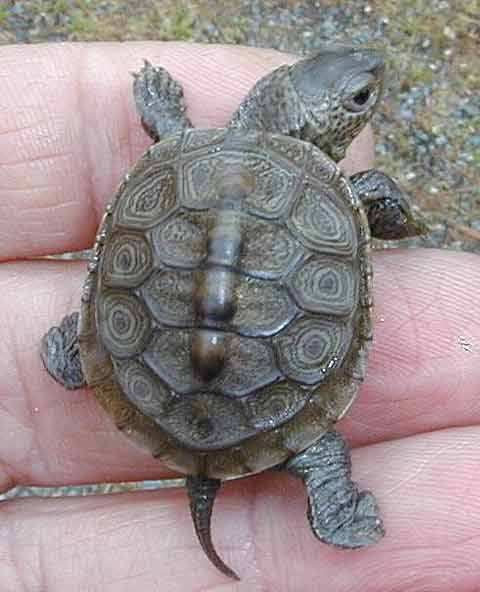
Northernmost Diamondback Terrapin Hatchling
Hatchling 008-01, who pipped in the fall but opted to remain over winter in her underground nest chamber, stretched out to 2.8 centimeters carapace length and weighed 6 grams. Far from dehydrated, she was bright-eyed and frisky, in a hurry to get a jumpstart on the season ahead.
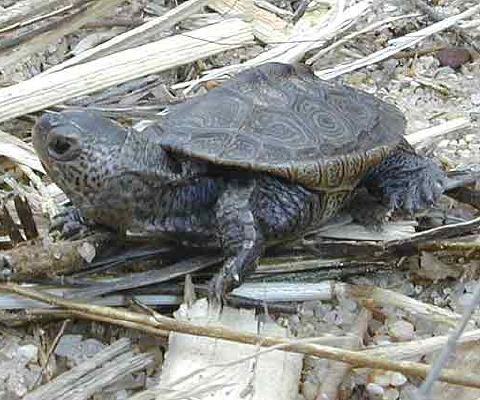
Northernmost Terrapin Hatchling Released into Herring River Marsh
I released Hatchling 008 at the head of the National Sea Shore trail to Great Island at the Gut — a tombolo which now converts the island into a peninsula. After enduring waves of weekend walkers who ooh-ed and aah-ed, snapped pictures, and suffered my lecture on conserving terrapins, she ambled eastward into the marsh, crawled under a dense layer of beach grass, and disappeared from sight.
